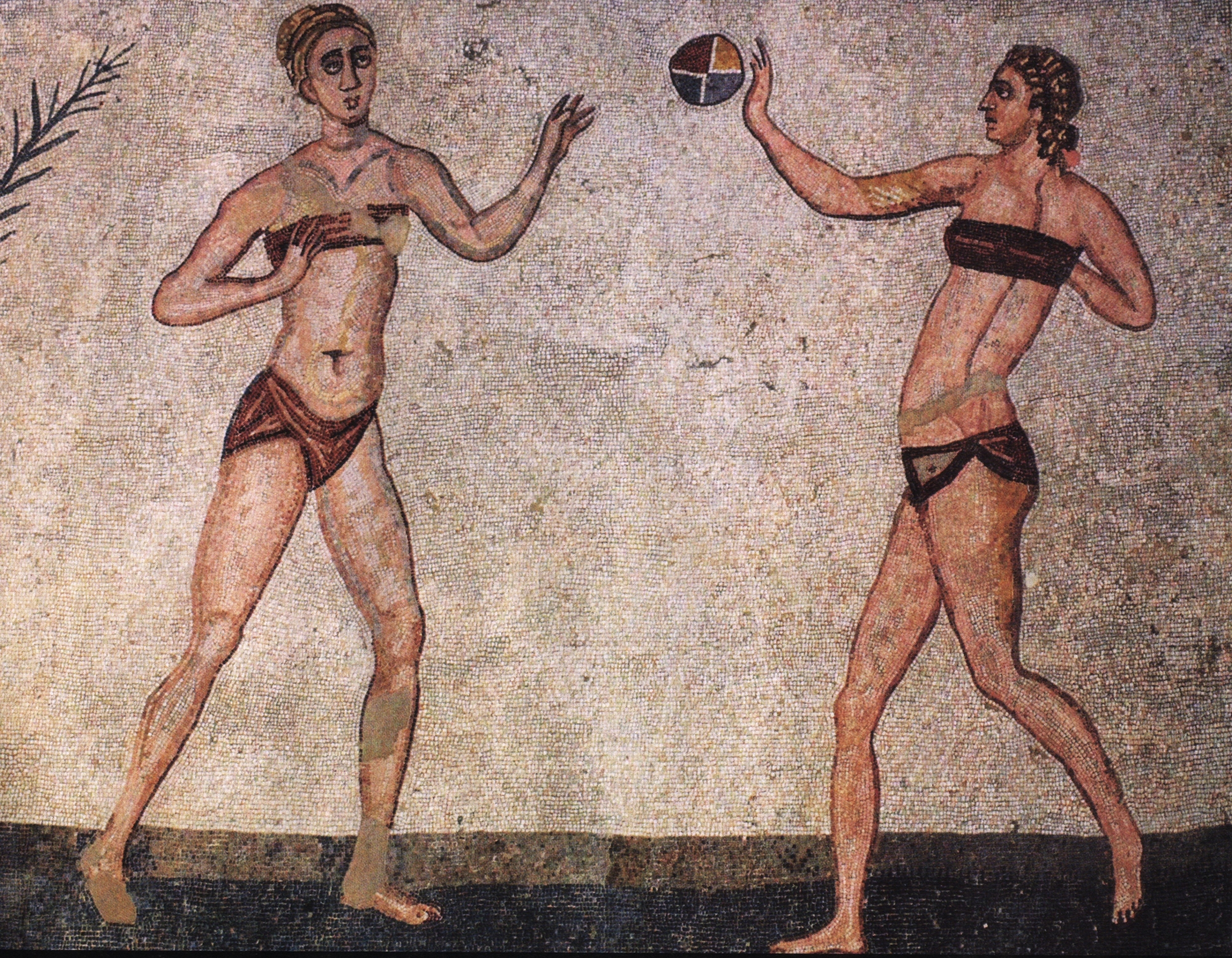Trigon (game) on:
[Wikipedia]
[Google]
[Amazon]
 Trigon was a ball game played by the
Trigon was a ball game played by the

Andrea Jördens, Statthalterliche Verwaltung in der römischen Kaiserzeit
/ref>
Trigon
from Wladyslaw Jan Kowalski's pages on Roman ball games Ball games Ancient Roman sports
 Trigon was a ball game played by the
Trigon was a ball game played by the ancient Romans
In modern historiography, ancient Rome refers to Roman people, Roman civilisation from the founding of the city of Rome in the 8th century BC to the collapse of the Western Roman Empire in the 5th century AD. It encompasses the Roman Kingdom ...
. The name derives from the Greek
Greek may refer to:
Greece
Anything of, from, or related to Greece, a country in Southern Europe:
*Greeks, an ethnic group.
*Greek language, a branch of the Indo-European language family.
**Proto-Greek language, the assumed last common ancestor ...
(, "three-cornered, triangular"), and may have been a romanized version of a Greek game called (). It was a type of juggling
Juggling is a physical skill, performed by a juggler, involving the manipulation of objects for recreation, entertainment, art or sport. The most recognizable form of juggling is toss juggling. Juggling can be the manipulation of one object o ...
game, probably involved three players standing in a triangle (hence the name) and passing a hard ball back and forth, catching with the right and throwing with the left hand. Besides the three players, called ''trigonali'', there were also assistants called ''pilecripi'', who kept score and retrieved runaway balls.
Description in the ''Satyricon''

Petronius
Gaius Petronius Arbiter"Gaius Petronius Arbiter"
Satyricon The ''Satyricon'', ''Satyricon'' ''liber'' (''The Book of Satyrlike Adventures''), or ''Satyrica'', is a Latin work of fiction believed to have been written by Gaius Petronius, though the manuscript tradition identifies the author as Titus Petr ...
'' has a description of a ball game usually assumed to be trigon, although its name is never mentioned. The bald old man Trimalchio is playing with a couple of young curly-haired slave boys. Trimalchio is obviously not a serious trigon player because he plays in his sandals, and he never stoops to retrieve the ball but instead has a servant replace it with a fresh ball from a big sack. When he snapped his fingers, a slave brought him water to wash his hands, and when he was finished he dried his hands with the long curly hair of the young slave boys.
Petronius also remarks that in this case, the ''pilecripus'' did not count the number of times the players successfully passed the ball, but instead the number of balls that dropped on the ground. This may be a joke making fun of Trimalchio's low level of skill, or simply an innovative scoring method.Satyricon The ''Satyricon'', ''Satyricon'' ''liber'' (''The Book of Satyrlike Adventures''), or ''Satyrica'', is a Latin work of fiction believed to have been written by Gaius Petronius, though the manuscript tradition identifies the author as Titus Petr ...
Rules
To play the sport, at least three participants would organize themselves in a triangle shape. Each player would hold a small and hard ball. The players would throw the balls at each other with their right hand and aim to catch the ones thrown at them with their left. Participants had around three to six balls. The point of the game was to keep the balls circling between the players continuously at high speeds. In one version of the gamer, if a player failed to catch the ball they would lose a point. Whoever had the least points at the end of the game lost. In another version of the game, if the ball fell the game was over and whoever failed to catch it was considered the loser. Players who could use their left-hand to catch balls were considered to be admirable due to the skill involved. Scorekeepers would be used to keep track of the points and retrieve stray balls./ref>
See also
* Harpastum *History of physical training and fitness
Physical training has been present in human societies throughout history. Usually, it was performed for the purposes of preparing for physical competition or display, improving physical, emotional and mental health, and looking attractive. It ...
References
{{ReflistExternal links
Trigon
from Wladyslaw Jan Kowalski's pages on Roman ball games Ball games Ancient Roman sports